- Home
- M. L. Buchman
Full Blaze
Full Blaze Read online
Thank you for purchasing this eBook.
At Sourcebooks we believe one thing:
BOOKS CHANGE LIVES.
We would love to invite you to receive exclusive rewards. Sign up now for VIP savings, bonus content, early access to new ideas we're developing, and sneak peeks at our hottest titles!
Happy reading!
SIGN UP NOW!
Copyright © 2014 by M.L. Buchman
Cover and internal design © 2014 by Sourcebooks, Inc.
Cover art by Don Sipley
Sourcebooks and the colophon are registered trademarks of Sourcebooks, Inc.
All rights reserved. No part of this book may be reproduced in any form or by any electronic or mechanical means including information storage and retrieval systems—except in the case of brief quotations embodied in critical articles or reviews—without permission in writing from its publisher, Sourcebooks, Inc.
The characters and events portrayed in this book are fictitious or are used fictitiously. Any similarity to real persons, living or dead, is purely coincidental and not intended by the author.
Published by Sourcebooks Casablanca, an imprint of Sourcebooks, Inc.
P.O. Box 4410, Naperville, Illinois 60567-4410
(630) 961-3900
Fax: (630) 961-2168
www.sourcebooks.com
Contents
Front Cover
Title Page
Copyright
Chapter 1
Chapter 2
Chapter 3
Chapter 4
Chapter 5
Chapter 6
Chapter 7
Chapter 8
Chapter 9
Chapter 10
Chapter 11
Chapter 12
Chapter 13
Chapter 14
Chapter 15
Chapter 16
Chapter 17
Chapter 18
Chapter 19
An excerpt from Pure Heat
About the Author
Back Cover
To the lady who has walked through the fire with me for much of two decades.
Chapter 1
Cal Jackson stared up at the wall of flame eating its way toward him through the forest. He was always tempting fate one step too far. Now he was way past the second step, as well as the third. He was standing in the foreign land of totally screwed. In his seven years of fighting wildfires and five more photographing them, he’d never been this far over the line. Not even close.
He’d ridden the edge a lot since he was a testosterone-laden teen. It had earned him his fair share of cold slaps from ticked-off women, but maybe more than his share of warm and friendly nights. It had also led to numerous interesting opportunities to travel for both work and play, so he’d learned to take that risk without really thinking about it.
He tried not to take that second step very often; it was his warning that he was pushing the limits. But dancing along the edge of that step was what had won him so many of his awards. Though the Pulitzer for photography and “best of” for World Press Photo still remained out of reach, he’d bagged a lot of awards including the cover on National Geographic. And Time, twice.
Out here, way past the second step, the Grindstone Canyon Fire was in full-throated roar. The sound throbbed against his body with bass notes that actually shook his inner organs. He’d stood close beside the tracks when two-hundred-car freight trains had flown past at full speed. This was louder. Nor did it conveniently pass by and Doppler into the distance; this train of fire had him clear in its sights.
The air was growing so hot that it hurt to breathe. His acute sense of smell for smoke, burning pitch, and carbon had long since been overwhelmed by the saturation of them in the air. He’d embedded tight with a crew of hotshot firefighters who were fast losing ground against the wildfire despite their best efforts. It happened that way. Fighting fire was a delicate back-and-forth dance between flame and attacker, almost like a hip-hop advance and retreat, attack and counterattack by both sides of the…hoedown.
Hoedown? Where had he come up with that? Third foster father. Yuck!
In one way the comparison was appropriate, as it was with the rakes, Pulaskis, and even hoes that a hotshot crew used to battle the flames. Not hoedown, but rather… His brain was trying to work out what hip-hop dancers called that battle of dance, power, and sensuality—that had to be about the stupidest damn thought to have as his last on earth.
The Grindstone in southern California was probably the last big fire of the year in the United States. The Pacific Northwest was already getting rain, and Colorado had snow, though that hadn’t slowed down the Fern Lake Fire back in 2012. He’d won two awards and gotten national headlines on that one for his piece on fighting wildfires when the supply tanks and rivers froze and the helicopters couldn’t get at the water to fight the flames.
The Southeast had just been soaked by a really serious trio of hurricanes. So this year California was last in the hot seat, and the fires above Santa Barbara were doing their best to take back the hills for Mother Nature. It had started in the same area of Rattlesnake Canyon Park as the lethal Rattlesnake Fire of 1953 that killed fifteen firefighters. Though this time it was started by lightning rather than a psycho arsonist.
You’d think he’d have grabbed a clue from the historical setting, though he’d been no better with history than most of the subjects in school, except fighting and photography. With maturity, he’d added “fire” as an adjective to both of them. He now knew fire history as well as any hotshot walking the hills, except for this time when it should have warned him. There hadn’t been a bad burn here in more than sixty years, so it was due.
The hotshot crew he’d been with had been in the heat for a week, driving ahead and then retreating—dancing that careful strategic dance against the fire. Less than two minutes ago the crew had taken off down a narrow track leading across a cliff face and onto a rolling slope that led down into the distant valley. Their escape route was clean. He’d hesitated an extra fifteen seconds to get a shot of a massive fig tree, over eighty feet tall, being ripped up by fire-generated winds and tossed aside like a matchstick. Fifteen lousy seconds.
The problem was that the fire had cast the flaming tree down right across his escape route. The tree not only lay across the path, but it was catching all of the surrounding material on fire as well. The crew looked at him helplessly across the gap.
The notch canyon that separated them was too far for a rope cast, and the vertical walls that plunged down to either side of his position required a level of mountaineering skill that included hammers and pitons, neither of which he was carrying. He carefully eyed a ledge about ten feet below, but could think of no way to get down to it. Far too narrow a landing to risk a jump. Yet.
He could see the crew boss on the radio, but with the fire’s roar, Cal couldn’t hear him even though his own radio handset was in its pouch right against his shoulder and the volume was turned up to full.
The smoke blotted out the boss just as he was about to make a hand sign of some sort. A glance upward into the smoke canopy told him that no helicopters would be able to save his sorry behind. The mushroom cloud of smoke—looking like a nuclear blast, it was so intense—rose ten thousand feet above the California landscape would block any line of approach.
The ravine to the south was clogged with fire, and the one to the north was now fully lit by the thrown tree, its branches ablaze like a thousand-armed candelabra. The two ravines met to the west. The only way out was east—and there raged the beast.
The narrow ledge of his final demise was covered i
n a few dogwood and valley oak trees, tall grasses, and dense manzanita brush. When the fire rolled over this site, it would burn hot. Hot in the same way it had burned over the nineteen-man crew in Yarnell, Arizona, the air so superheated it had burned right through their foil emergency shelters. It had done that despite the circular clearing they’d cut around themselves. And he didn’t even carry a chain saw to try to make a clearing. All he had were his cameras.
He backed to the edge of the precipice and then turned once more to look at the flame. He wasn’t even conscious of his actions as he lifted his new Canon Mark III camera, found the frame, shot the photo. Zoomed back. Found the next, shot it. The beast was close. He’d only once been so close to the heart of the firestorm. During his days as a member of a hotshot crew, they’d have been long gone before the heart of the fire rolled this close. The camera was actually heating in his hands, prickly hot to hold.
Too close! That was it. He dropped the camera into his bag and pulled out his old workhorse 6D body with the 28 mm wide-angle lens. No way he’d risk a lens change with all of the dust and ash in the air.
There! He could see the image coming together that would make a cover photo. Another prizewinner was almost here. Just a few more seconds… If he could just…
A metal shape zipped by the lens, fast. He didn’t see what it was, but some instinct had him pressing the shutter. He flicked back to the image.
On his viewfinder a winged drone a half-dozen feet in length, painted black with gold-and-orange flames, had flown between him and the fire. It had a bold “MHA” emblazoned on its side.
Some comfort that was. All it meant was that someone from Mount Hood Aviation was going to have the award-winning photo of the journalist who burned alive while clutching his camera like a damned idiot. All because he’d had to take that third step and now couldn’t wrench back from it.
Cal was going to make a lousy Cinderella, no pretty gown rising from the ashes for him. But he was sure going to end up as a cinder. Another thirty seconds and he’d have to take his chances inside the foil shelter, though he’d sworn he’d never do that again.
Maybe his life was supposed to pass before his eyes right about now, but he hoped not. He’d beaten the first sixteen years of his life down with every ounce of a firefighter’s willpower until they didn’t exist. The time since had been mostly good, but with the way his luck was running today, he’d get to see those early days before he’d named himself Calvin Jackson.
Some idiot part of him started to raise the camera again, but then he stopped. His cameras were going to cook right along with him, even if he threw himself over them like a Marine covering a grenade to save his buddies. For once he just looked at the wall of flame. Its heart so hot it glowed gold as the fire swarmed up tree trunks six stories tall with a single breath, sheathing each tree in a cloak of flame just six inches and fifteen hundred degrees thick. The roar deepened as if gathering its breath. So loud that—
The sharp blast of a voice over a loudspeaker not ten feet behind him so startled Cal that he almost stumbled off the ledge. Completely masked by the roar of the fire and with hundred-foot flames less than thirty yards away, a helicopter had come to hover behind him. It wore the same paint job as the drone.
A glance up showed the rotor blades shimmering in a lethal arc just a few feet above him and no break in the smoke-cloud cover. The hotshot crew was still invisible across the ravine. But far down below, right off the narrow spit of cliff he was perched upon, he could see the terrain. The pilot had flown up through a hole underneath the smoke and ash cloud.
“Get aboard, you bloody git!” the speaker screamed at him. He wouldn’t have heard it if it weren’t less than ten feet away and aimed right at him.
The chopper hung just out of reach, hovering with its open side door toward him. Over his shoulder he could see that the spinning rotor disk was within a foot or so of a stout oak tree. They couldn’t fly any closer to him. The chopper didn’t even have skids to grab on to like they always did in the movies, just wheels.
The cargo bay door was an open four-by-four-foot square of salvation, hanging a half-dozen feet away over a hundred-yard drop. He stuffed both cameras into the padded bag, snapped it shut, and chucked the bag through the door toward the rear so it wouldn’t go out the other side, which was also open. Then, squatting to make the leap while the chopper bounced in the roiling air currents, he jumped into space.
He landed mostly inside the door. Far enough to drag himself the rest of the way. He spotted a rope line, made sure it was secured to something, then snapped the D ring on the front of his safety harness onto it so that he was now secure.
“Good to go,” he shouted to the pilot. There was no way he could be heard. The freight train was screaming toward them, barely ten yards from the rotor tips.
The pilot, flying alone, risked a quick glance back, but was skilled enough for the chopper to remain rock stable despite the turbulent environment.
Cal only had long enough to get the impression of a narrow face and mirrored shades wrapped in a large, earmuff pilot’s headset. Seeing he was aboard, the pilot rolled the chopper hard left and dove down through the dwindling smoke hole. He caught the camera bag as it skidded across the deck plating.
A glance up at the cliff showed a tongue of flame now reaching out to grab where the chopper had hovered only moments before.
Now that he was safe, the adrenaline rush kicked out hard. He’d fought fires from California to Alaska, and he’d photographed them in Brazil, Russia, and a dozen other places. He’d never before had his hands shake so badly that he couldn’t even open the bag to make sure the cameras were okay. All he could do was clench it to his chest and let the shakes run through him.
***
“Yeah, Ground Command. This is Hawk Oh-two, I got him. You can release your crew to the next site.”
Jeannie Clark clicked off her mike and the one-word acknowledgment came right back. She was bummed. She’d finally found a flaw with her beautiful new Firehawk. Well, almost new. The machine had done a couple tours in Iraq first, but it had been totally renovated, repainted, and reconfigured with a big belly tank for dumping retardant on wildfires. It was new to her. Her boss and MHA’s lead pilot, Emily Beale, had only just certified her in this type last month. And the chopper was also new to Mount Hood Aviation’s “Hoodies,” one of the country’s premier firefighters-for-hire contractors. It was only the second load-rated Type I helicopter in their inventory.
Until recently, she’d only been certified in the midsize Type II Twin Huey 212 and the tiny Type III MD500, both much-lower-capacity crafts. The Firehawk was built on the Sikorsky Black Hawk frame and could lift a massive thousand gallons of retardant or water, about four and a half tons. That could make a serious dent in a blaze except when Mama Nature was really kicking up her heels with Papa Fire. That was what her Australian friend Dale always called them, as if they were part of his Aboriginal Dreamtime creation mysticism. She’d looked up the expression and it wasn’t, but she’d kept using it even after coming to America. People always looked at her cross-eyed when she used it, so she now kept it to herself.
The thing was, with her MD500, she could have scooted right onto that cliff edge instead of hovering out in space. Had to give the guy some points—at three hundred feet up a cliff, he’d jumped right out with no hesitation. That said something about guts, or desperation. She’d half expected him to freeze and die there. Even three more seconds and she’d have had to bug out and leave him there to burn.
She continued to maneuver hard and fast, trying to get down and out of the smoke-clear hole before it totally closed. Driving straight out through the ash wall that surrounded her on all sides had two bad things going for it. First, you couldn’t see squat—even radar got dicey in some of the heat and ash plumes. Second, her air filters would ingest enough ash to clog them up good. Then she’d have to go back to base
and wait while they were serviced. Assuming her engines kept running long enough even to do that. Doing an autorotate landing into the suburbs of Santa Barbara wasn’t her idea of a good time.
Still, she might have to return to base because Mister Brainless Got-himself-trapped was hurt.
“You okay back there?”
In answer he squeezed between the pilot and copilot seats, stepping carefully over the center console despite the lunges of the chopper due to her maneuverings. He also was smart enough not to bump the cyclic control between his knees as he slid into the seat and buckled up. Only once he was buckled in did he release the line attached to his harness and toss it toward the rear. That spoke of training.
The acrid scent of char and smoke was a slap to her face, it radiated off his black-smeared yellow Nomex fire suit. He was dressed like a hotshot right down to the foil shelter on his hip, but all he carried was a padded bag clutched tight against his chest.
She pointed a finger toward a dangling headset without taking her hands off the dual controls of cyclic and collective. Especially not with the cliff still a bare two rotor widths away, 107 feet and four inches, give or take the odd boulder.
His hands were fumbling as he pulled on the headset. Adrenaline letdown. She’d seen it before, had it herself when a tree had exploded below her MD500 a few months ago and taken out the tail rotor. Crash landing in the middle of the New Tillamook Burn had been a wild ride. He finally got the headset pulled on, once he figured out he had to remove his hard hat first.
“What the hell is in that bag,” she asked him over the intercom, “that you had to throw it in before yourself? Are you berko, Yank?” Didn’t the guy have any idea about personal safety first?
“Did I?” He glanced down at the bag as if it might know the answer. Then he pulled its strap over his head, tangling it in the headset’s cord. Took him a bit to straighten it all out before he answered.
“It’s my cameras.” He turned to face her and did that standard freeze double-take.

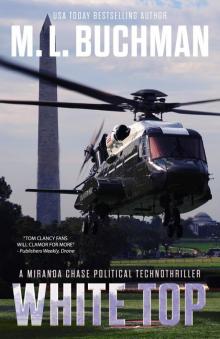 White Top
White Top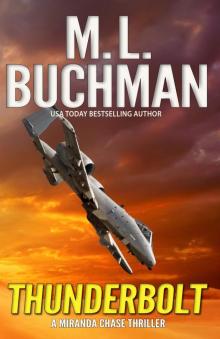 Thunderbolt
Thunderbolt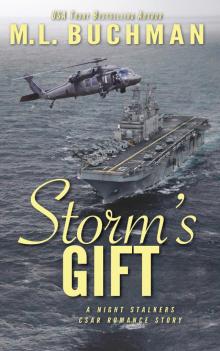 Storm's Gift
Storm's Gift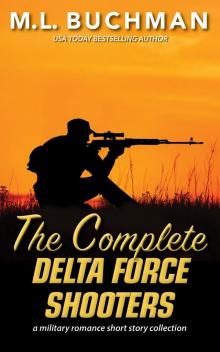 The Complete Delta Force Shooters
The Complete Delta Force Shooters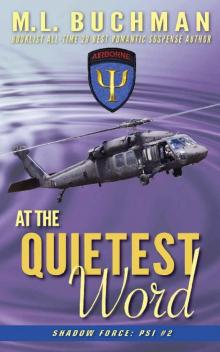 At the Quietest Word (Shadowforce: Psi Book 2)
At the Quietest Word (Shadowforce: Psi Book 2)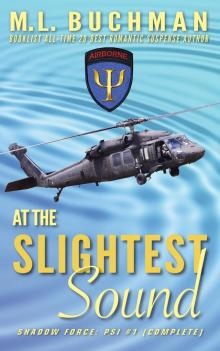 At the Slightest Sound
At the Slightest Sound Dilya's Christmas Challenge
Dilya's Christmas Challenge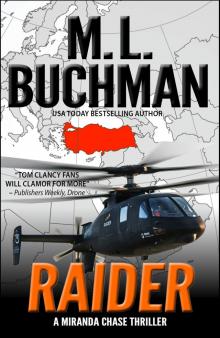 Raider
Raider Havoc
Havoc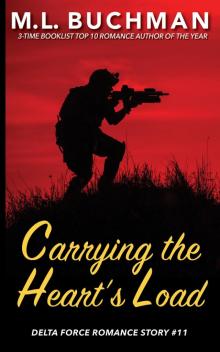 Carrying the Heart's Load
Carrying the Heart's Load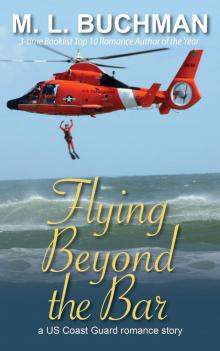 Flying Beyond the Bar
Flying Beyond the Bar Firelights of Christmas
Firelights of Christmas Where Dreams Are Well Done
Where Dreams Are Well Done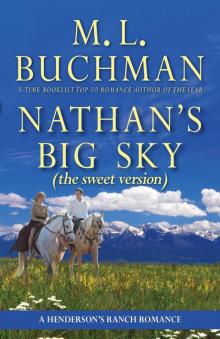 Nathan's Big Sky
Nathan's Big Sky Heart of a Russian Bear Dog
Heart of a Russian Bear Dog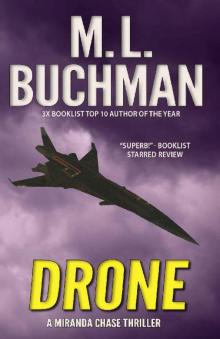 Drone: an NTSB / military technothriller (Miranda Chase Book 1)
Drone: an NTSB / military technothriller (Miranda Chase Book 1) Flower of Destiny
Flower of Destiny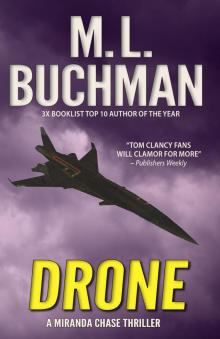 Drone
Drone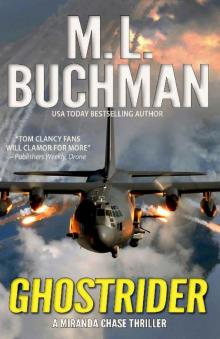 Ghostrider: an NTSB-military technothriller (Miranda Chase Book 4)
Ghostrider: an NTSB-military technothriller (Miranda Chase Book 4)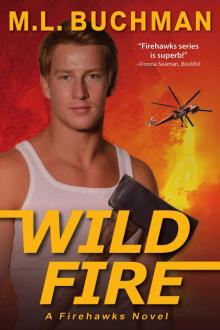 Wild Fire
Wild Fire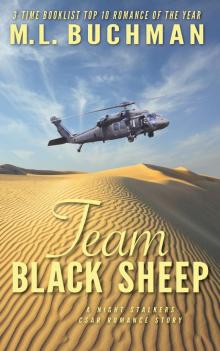 Team Black Sheep
Team Black Sheep The Complete Delta Force Warriors
The Complete Delta Force Warriors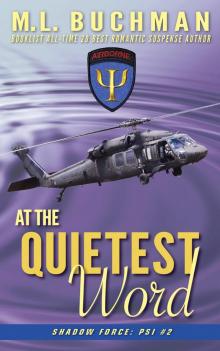 At the Quietest Word
At the Quietest Word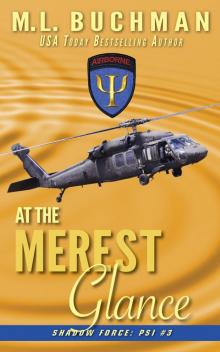 At the Merest Glance
At the Merest Glance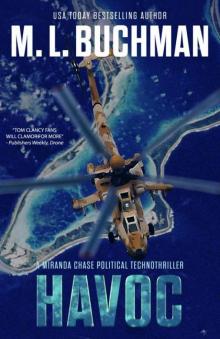 Havoc: a political technothriller (Miranda Chase Book 7)
Havoc: a political technothriller (Miranda Chase Book 7)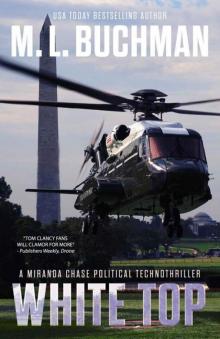 White Top: a political technothriller (Miranda Chase Book 8)
White Top: a political technothriller (Miranda Chase Book 8) Between Shadow and Soul
Between Shadow and Soul Island Christmas
Island Christmas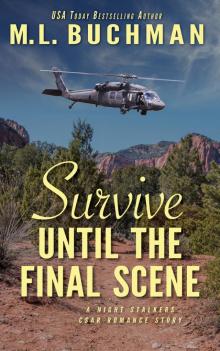 Survive Until the Final Scene
Survive Until the Final Scene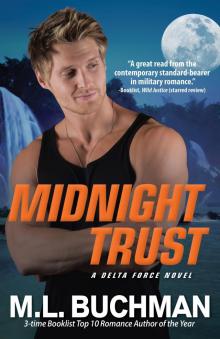 Midnight Trust
Midnight Trust Return to Eagle Cove
Return to Eagle Cove Where Dreams Reside
Where Dreams Reside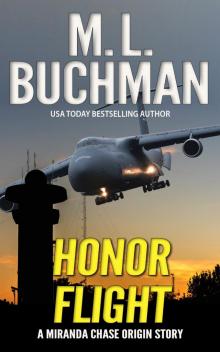 Honor Flight
Honor Flight Where Dreams Are Sewn
Where Dreams Are Sewn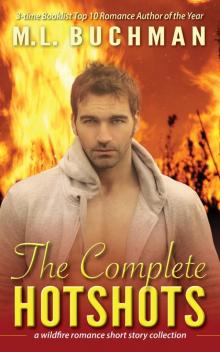 The Complete Hotshots
The Complete Hotshots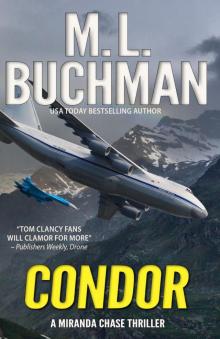 Condor
Condor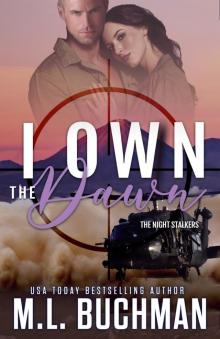 I Own the Dawn
I Own the Dawn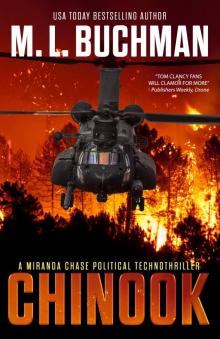 Chinook
Chinook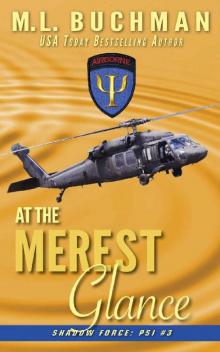 At the Merest Glance: a military paranormal romance (Shadowforce: Psi Book 3)
At the Merest Glance: a military paranormal romance (Shadowforce: Psi Book 3) Since the First Day
Since the First Day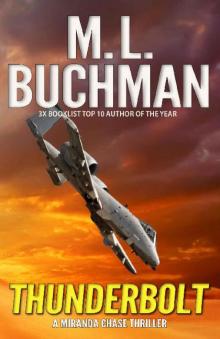 Thunderbolt: an NTSB / military technothriller (Miranda Chase Book 2)
Thunderbolt: an NTSB / military technothriller (Miranda Chase Book 2) For Her Dark Eyes Only
For Her Dark Eyes Only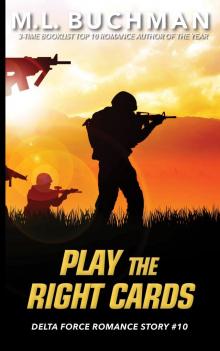 Play the Right Cards
Play the Right Cards Lost Love Found in Eagle Cove
Lost Love Found in Eagle Cove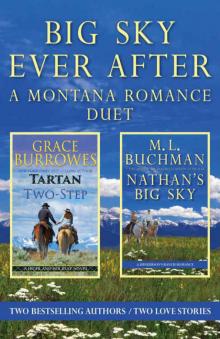 Big Sky Ever After: a Montana Romance Duet
Big Sky Ever After: a Montana Romance Duet Keepsake for Eagle Cove
Keepsake for Eagle Cove At the Clearest Sensation
At the Clearest Sensation The Ides of Matt 2015
The Ides of Matt 2015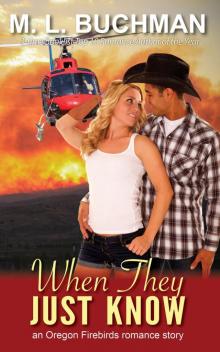 When They Just Know
When They Just Know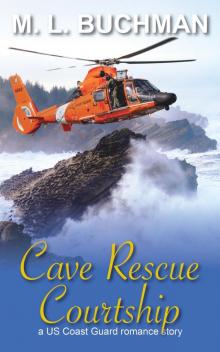 Cave Rescue Courtship
Cave Rescue Courtship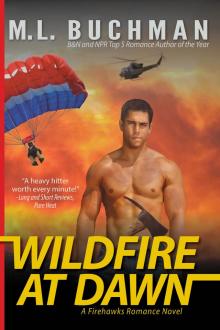 Wildfire at Dawn
Wildfire at Dawn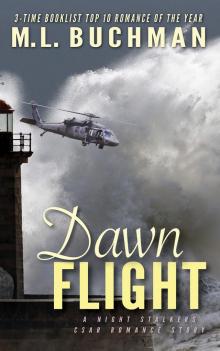 Dawn Flight
Dawn Flight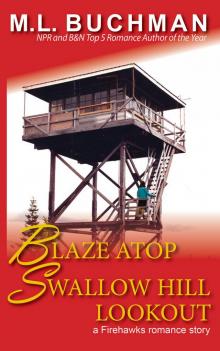 Blaze Atop Swallow Hill Lookout
Blaze Atop Swallow Hill Lookout The Sword of Io
The Sword of Io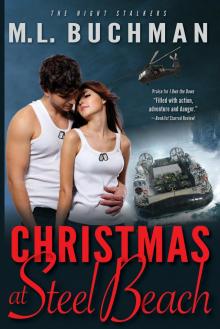 Christmas at Steel Beach
Christmas at Steel Beach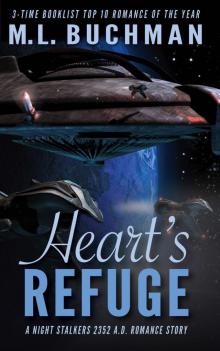 Heart's Refuge
Heart's Refuge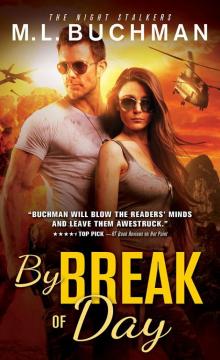 By Break of Day (The Night Stalkers)
By Break of Day (The Night Stalkers) Kee's Wedding
Kee's Wedding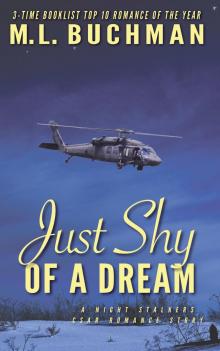 Just Shy of a Dream
Just Shy of a Dream Path of Love
Path of Love Ghost of Willow's Past
Ghost of Willow's Past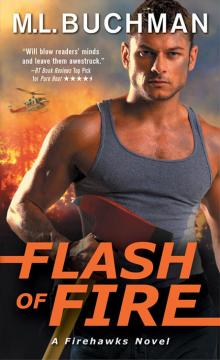 Flash of Fire
Flash of Fire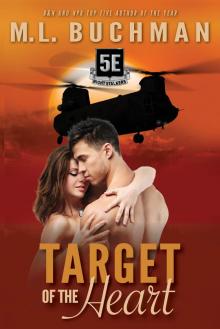 Target of the Heart
Target of the Heart Sound of Her Warrior Heart
Sound of Her Warrior Heart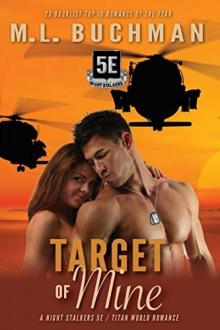 Target of Mine: The Night Stalkers 5E (Titan World Book 2)
Target of Mine: The Night Stalkers 5E (Titan World Book 2) The Complete Where Dreams
The Complete Where Dreams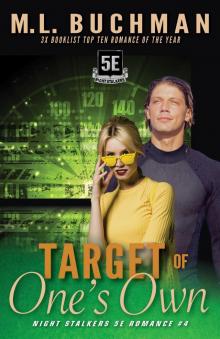 Target of One's Own
Target of One's Own For All Their Days
For All Their Days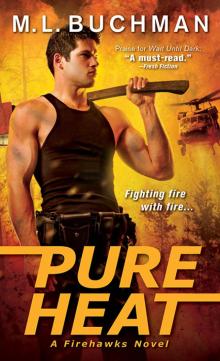 Pure Heat
Pure Heat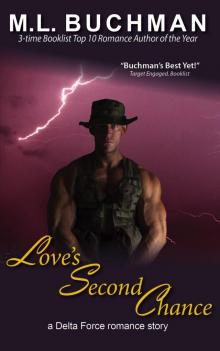 Love's Second Chance
Love's Second Chance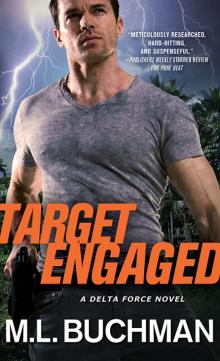 Target Engaged
Target Engaged Bring On the Dusk
Bring On the Dusk Wait Until Dark (The Night Stalkers)
Wait Until Dark (The Night Stalkers)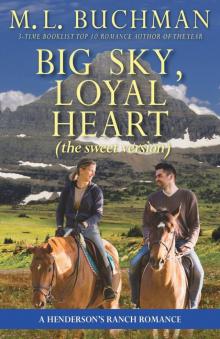 Big Sky, Loyal Heart
Big Sky, Loyal Heart Welcome at Henderson's Ranch
Welcome at Henderson's Ranch Damien's Christmas
Damien's Christmas Flight to Fight
Flight to Fight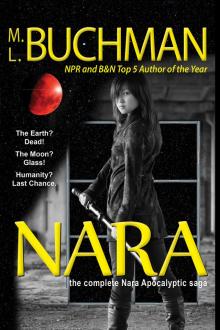 Nara
Nara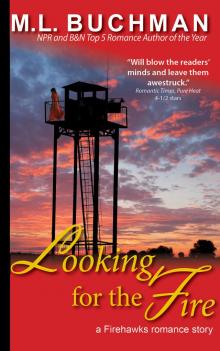 Looking for the Fire
Looking for the Fire Love Behind the Lines
Love Behind the Lines Peter's Christmas
Peter's Christmas In the Weeds
In the Weeds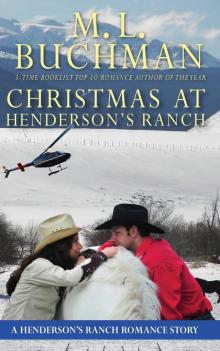 Christmas at Henderson's Ranch
Christmas at Henderson's Ranch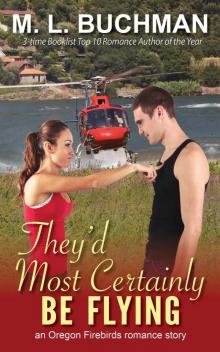 They'd Most Certainly Be Flying
They'd Most Certainly Be Flying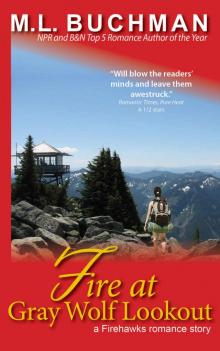 Fire at Gray Wolf Lookout (Firehawks Book 8)
Fire at Gray Wolf Lookout (Firehawks Book 8)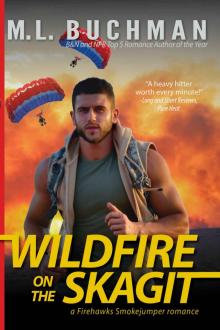 Wildfire on the Skagit (Firehawks Book 9)
Wildfire on the Skagit (Firehawks Book 9)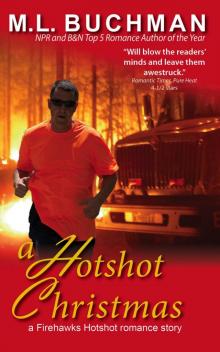 A Hotshot Christmas
A Hotshot Christmas Off the Leash
Off the Leash Where Dreams Books 1-3
Where Dreams Books 1-3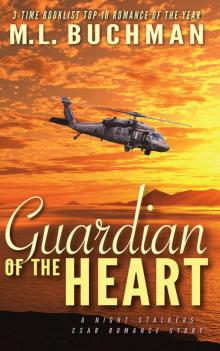 Guardian of the Heart
Guardian of the Heart The Ides of Matt 2017
The Ides of Matt 2017 Where Dreams Unfold
Where Dreams Unfold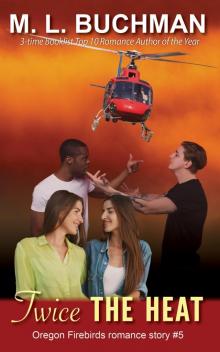 Twice the Heat
Twice the Heat Wild Justice (Delta Force Book 3)
Wild Justice (Delta Force Book 3) Flying Over the Waves
Flying Over the Waves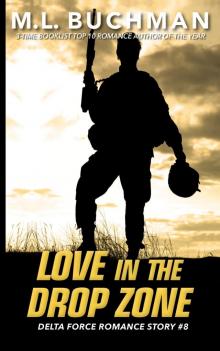 Love in the Drop Zone
Love in the Drop Zone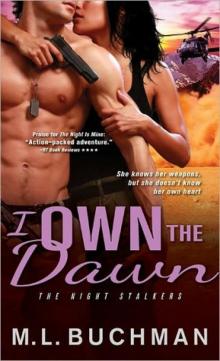 I Own the Dawn: The Night Stalkers
I Own the Dawn: The Night Stalkers What the Heart Holds Safe (Delta Force Book 4)
What the Heart Holds Safe (Delta Force Book 4) The Christmas Lights Objective
The Christmas Lights Objective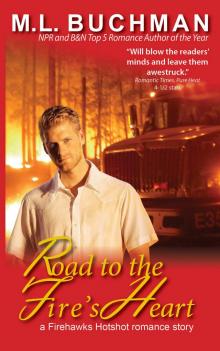 Road to the Fire's Heart
Road to the Fire's Heart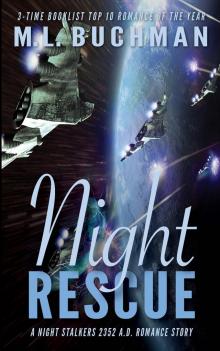 Night Rescue
Night Rescue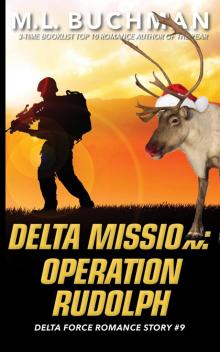 Delta Mission: Operation Rudolph
Delta Mission: Operation Rudolph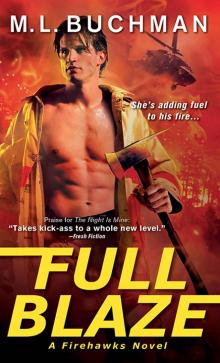 Full Blaze
Full Blaze Night Is Mine
Night Is Mine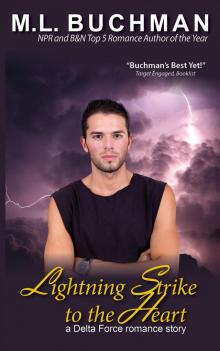 Lightning Strike to the Heart
Lightning Strike to the Heart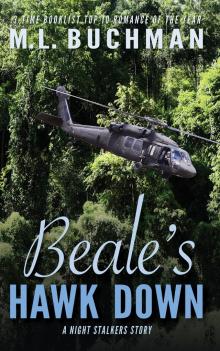 Beale's Hawk Down
Beale's Hawk Down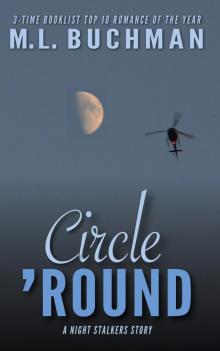 Circle 'Round
Circle 'Round Cookbook from Hell Reheated
Cookbook from Hell Reheated Zachary's Christmas
Zachary's Christmas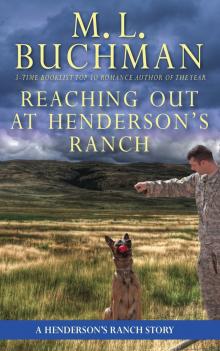 Reaching Out at Henderson's Ranch
Reaching Out at Henderson's Ranch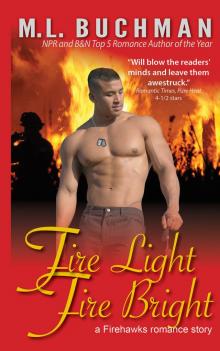 Fire Light Fire Bright
Fire Light Fire Bright The Ides of Matt 2016
The Ides of Matt 2016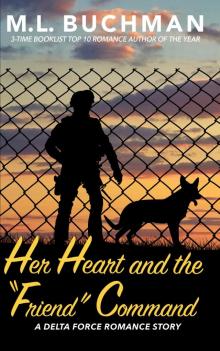 Her Heart and the Friend Command
Her Heart and the Friend Command On Your Mark
On Your Mark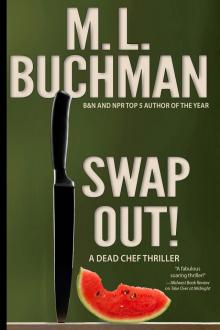 Swap Out!
Swap Out! Heart of the Cotswolds: England
Heart of the Cotswolds: England The Phoenix Agency_The Sum Is Greater
The Phoenix Agency_The Sum Is Greater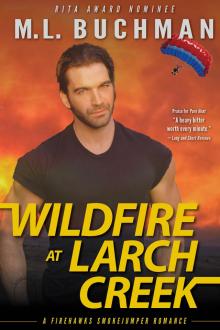 Wildfire at Larch Creek
Wildfire at Larch Creek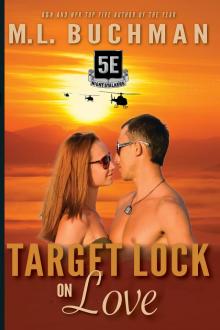 Target Lock On Love
Target Lock On Love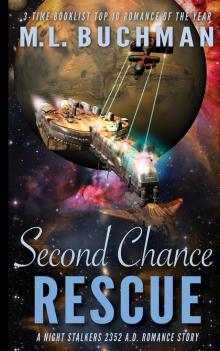 Second Chance Rescue
Second Chance Rescue Where Dreams Are Written
Where Dreams Are Written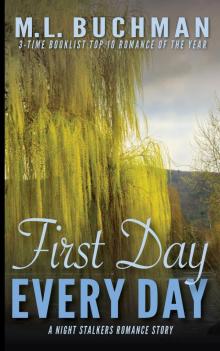 First Day, Every Day
First Day, Every Day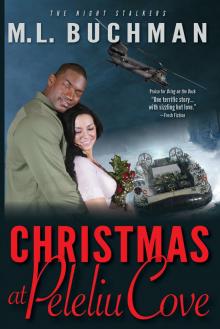 Christmas at Peleliu Cove
Christmas at Peleliu Cove Heart Strike
Heart Strike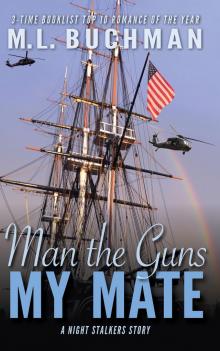 Man the Guns, My Mate
Man the Guns, My Mate Emily's Wedding
Emily's Wedding Daniel's Christmas
Daniel's Christmas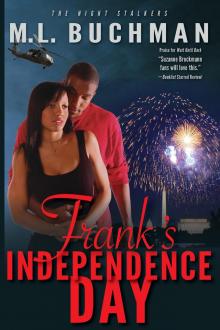 Frank's Independence Day
Frank's Independence Day The Phoenix Agency: The Sum Is Greater (Kindle Worlds Novella)
The Phoenix Agency: The Sum Is Greater (Kindle Worlds Novella)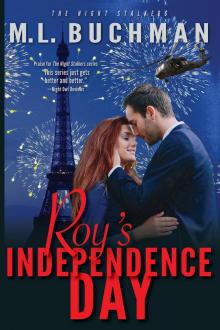 Roy's Independence Day
Roy's Independence Day